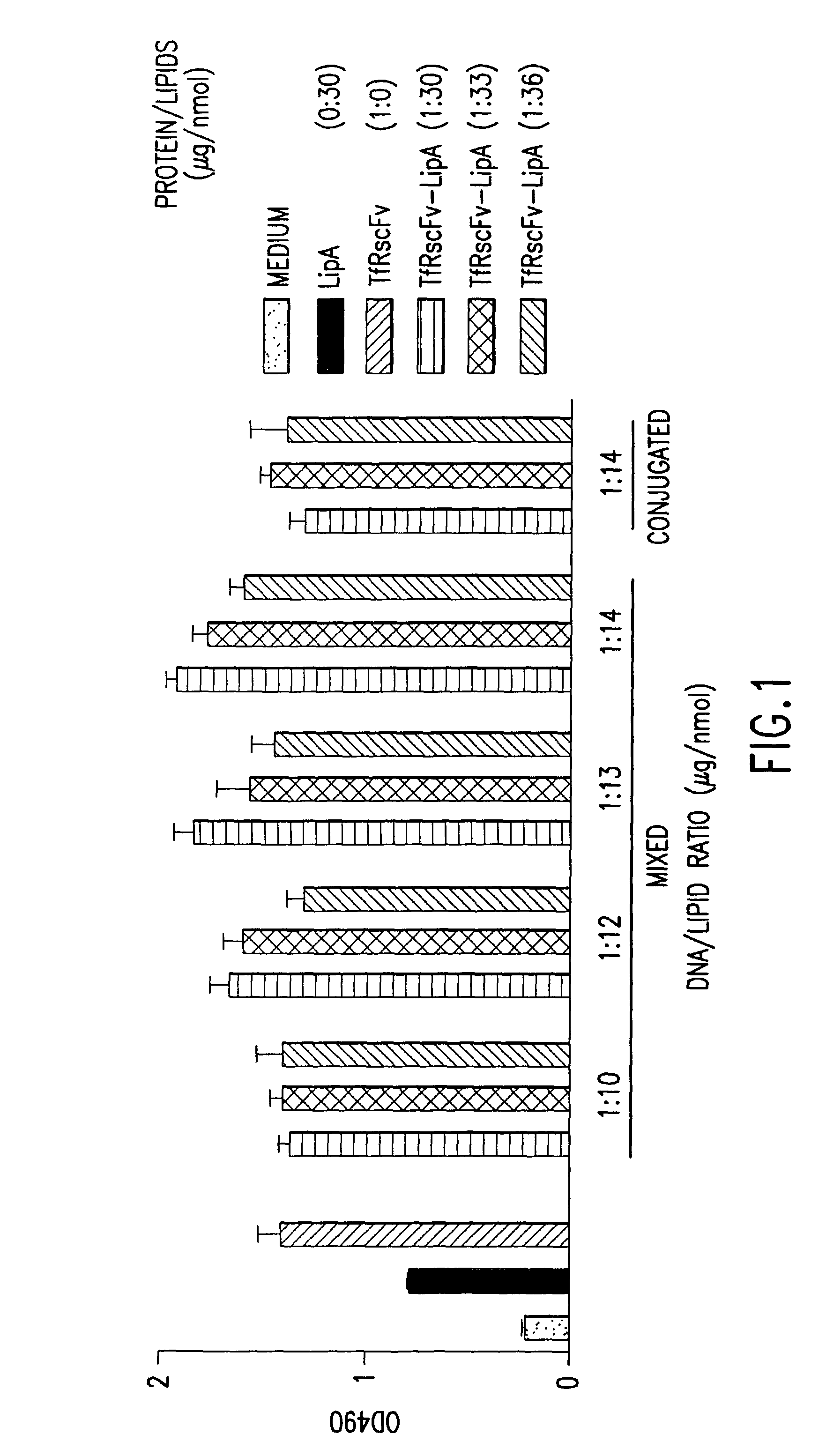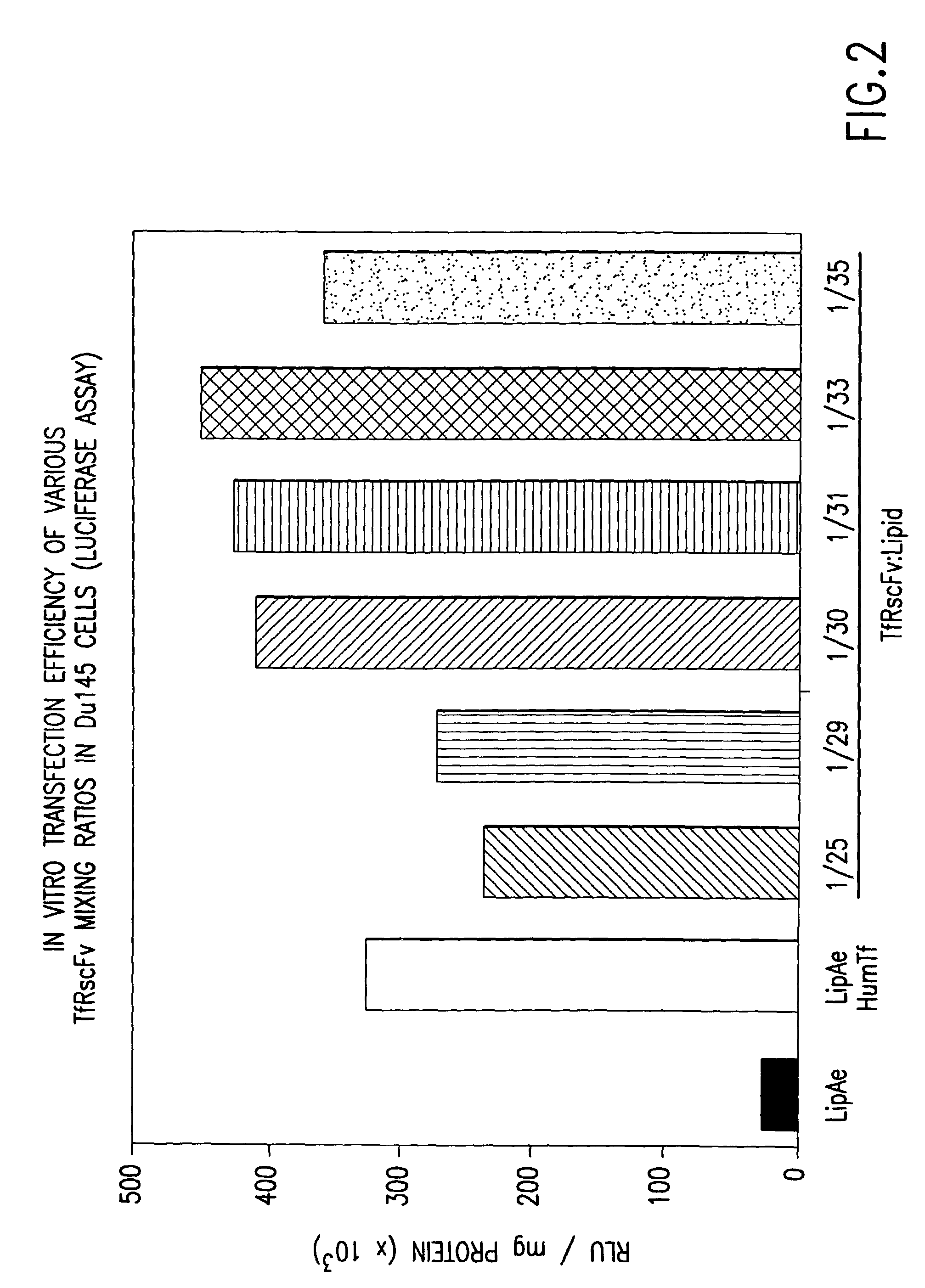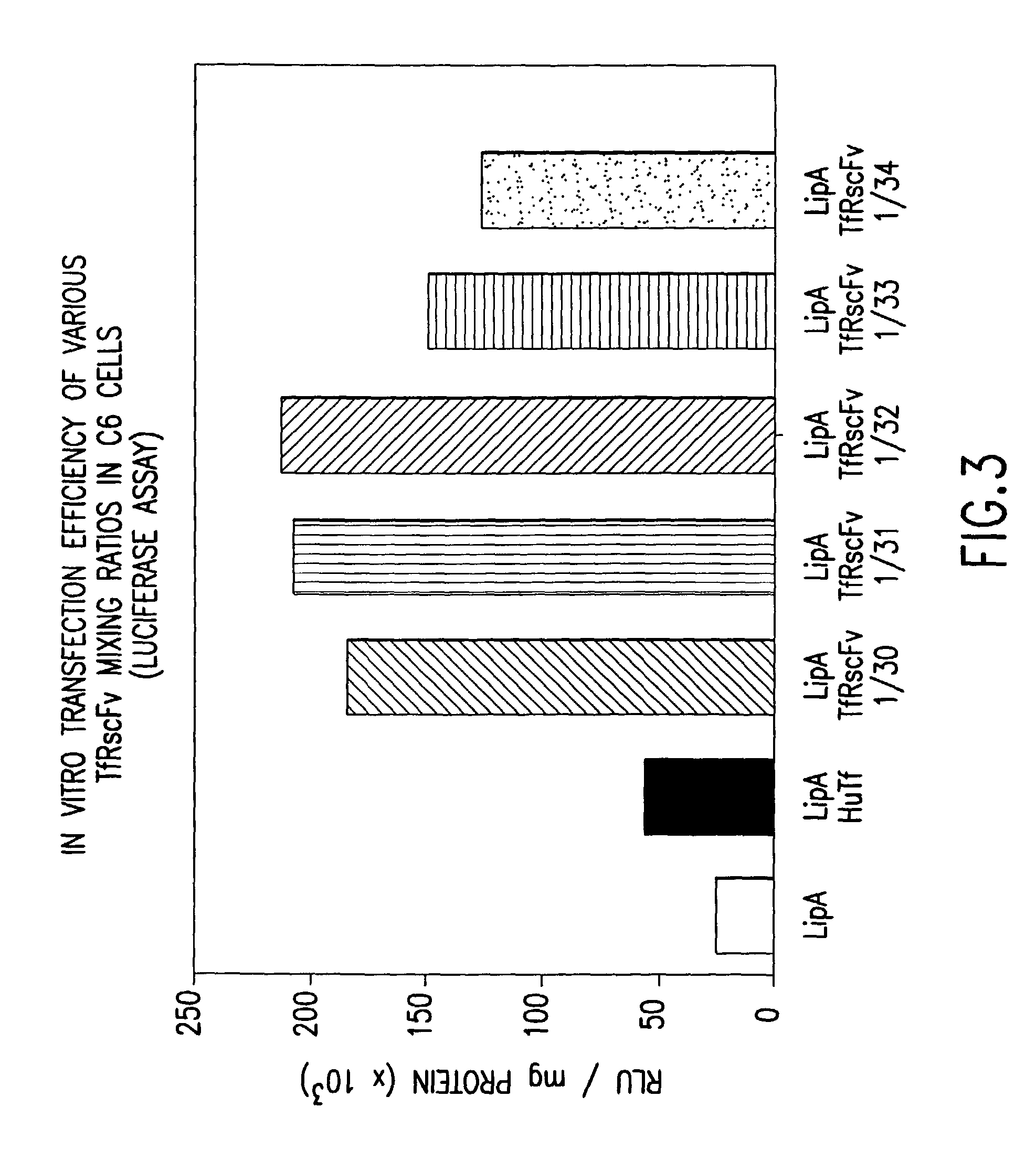Simplified and improved method for preparing an antibody or an antibody fragment targeted immunoliposome for systemic administration of a therapeutic or diagnostic agent
a technology of immunoliposome and systemic administration, which is applied in the direction of antibody medical ingredients, drug compositions, peptide/protein ingredients, etc., can solve the problems of lack of immunogenicity, failure to respond to therapy, and the inability to attract viruses as delivery vectors, so as to and improve the effect of immunogenicity
- Summary
- Abstract
- Description
- Claims
- Application Information
AI Technical Summary
Benefits of technology
Problems solved by technology
Method used
Image
Examples
example 1
Construction and Purification of TfRscFv with a 3′-Cysteine
[0054]Plasmid expression vector pDFH2T-vecOK was obtained from Dr. David Fitzgerald, NCl. This vector encodes the single chain fragment for the 5E9 antibody, which recognizes the human transferrin receptor (CD71). The VH-linker-Vκ TfRscFv was obtained by PCR amplification of the desired fragment. A cysteine moiety was added at the 3′ end of the TfRscFv protein. Two forms of this vector were constructed. The first contains a pelB leader signal sequence, for transport to the periplasmic space, and a His Tag. The presence of the His Tag aids in detection of the protein, thus simplifying development of the purification protocol. Although this form was used for the initial testing, FDA guidelines recommend that no extraneous sequences be present for use in clinical trials. Therefore, a second form minus both of these sequences also was made.
[0055]Using PCR amplification the nucleotide sequence for the cysteine residue and a NotI ...
example 2
Preparation of cys-TfRscFv-Liposome by Simple Mixing
[0058]Published PCT application WO 99 / 25320, incorporated herein by reference, describes the preparation of several cationic liposomes. The cationic liposomes prepared are clear solutions, their compositions and ratios are as follows:
[0059]
LipADOTAP / DOPE1:1 molar ratioLipBDDAB / DOPE1:1 molar ratioLipCDDAB / DOPE1:2 molar ratioLipDDOTAP / Chol1:1 molar ratioLipEDDAB / Chol1:1 molar ratioLipGDOTAP / DOPE / Chol2:1:1 molar ratioLipHDDAB / DOPE / Chol2:1:1 molar ratio(DOTAP = dioleoyltrimethylaminnonium phosphate, DDAB = dimethyldioctadecylammonium bromide; DOPE = dioleoylphosphatidylethanolamine; chol = cholesterol)
[0060]It is well known by those knowledgeable in the field that conjugated TfRscFv-immunoliposome retains its immunologic activity. We have established that the cys-TfRscFv can be chemically conjugated to lipoplex (PCT application WO 00 / 50008) and can efficiently transfect human prostate tumor cells in vitro and in vivo. It is common prac...
example 3
In Vitro Chemosensitization of Human Cancer Cell Lines by cys-TfRscFv-Immunoliposome Delivered wtp53
[0066]Experiments were performed to determine how effective the cys-TfRscFv-Liposome-p53 complex prepared by simple mixing would be in sensitizing prostate tumor cells to the drugs GEMZAR® (gemcitabine HCl; manufactured by Eli Lilly and Co.) and NOVANTRONE® (mitoxantrone, Immunex Corp.) both of which currently are used for the treatment of prostate cancer. The prostate tumor cell line DU145, which harbors mutant p53, was employed in these studies. The XTT cytotoxicity assay (66) was used to establish the level of chemosensitivity induced by the cys-TfRscFv-Liposome-p53 complex of this invention. 5×103 DU145 cells were plated / well of a 96 well plate. After 24 hours, the cells were transfected with the mixed cys-TfRscFv-Liposome-p53 complex. The cys-TfRscFv-Liposome-p53 complex was prepared by mixing at a ratio of 1:30 (w:w) (cys-TfRscFv:Liposome A) and 1:14 (μg p53 DNA:n moles total li...
PUM
| Property | Measurement | Unit |
|---|---|---|
| size | aaaaa | aaaaa |
| time | aaaaa | aaaaa |
| molecular weight | aaaaa | aaaaa |
Abstract
Description
Claims
Application Information
 Login to View More
Login to View More - R&D
- Intellectual Property
- Life Sciences
- Materials
- Tech Scout
- Unparalleled Data Quality
- Higher Quality Content
- 60% Fewer Hallucinations
Browse by: Latest US Patents, China's latest patents, Technical Efficacy Thesaurus, Application Domain, Technology Topic, Popular Technical Reports.
© 2025 PatSnap. All rights reserved.Legal|Privacy policy|Modern Slavery Act Transparency Statement|Sitemap|About US| Contact US: help@patsnap.com



